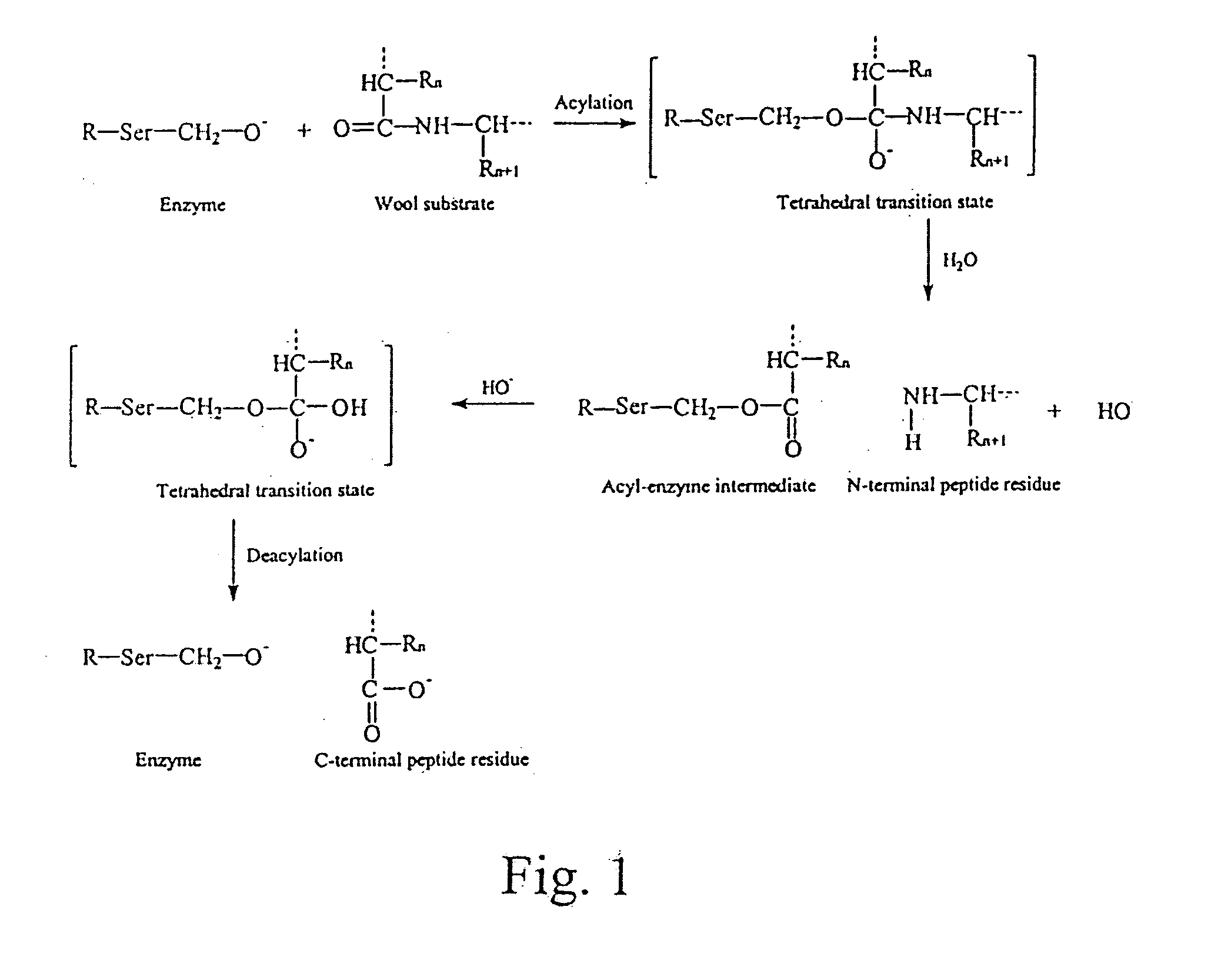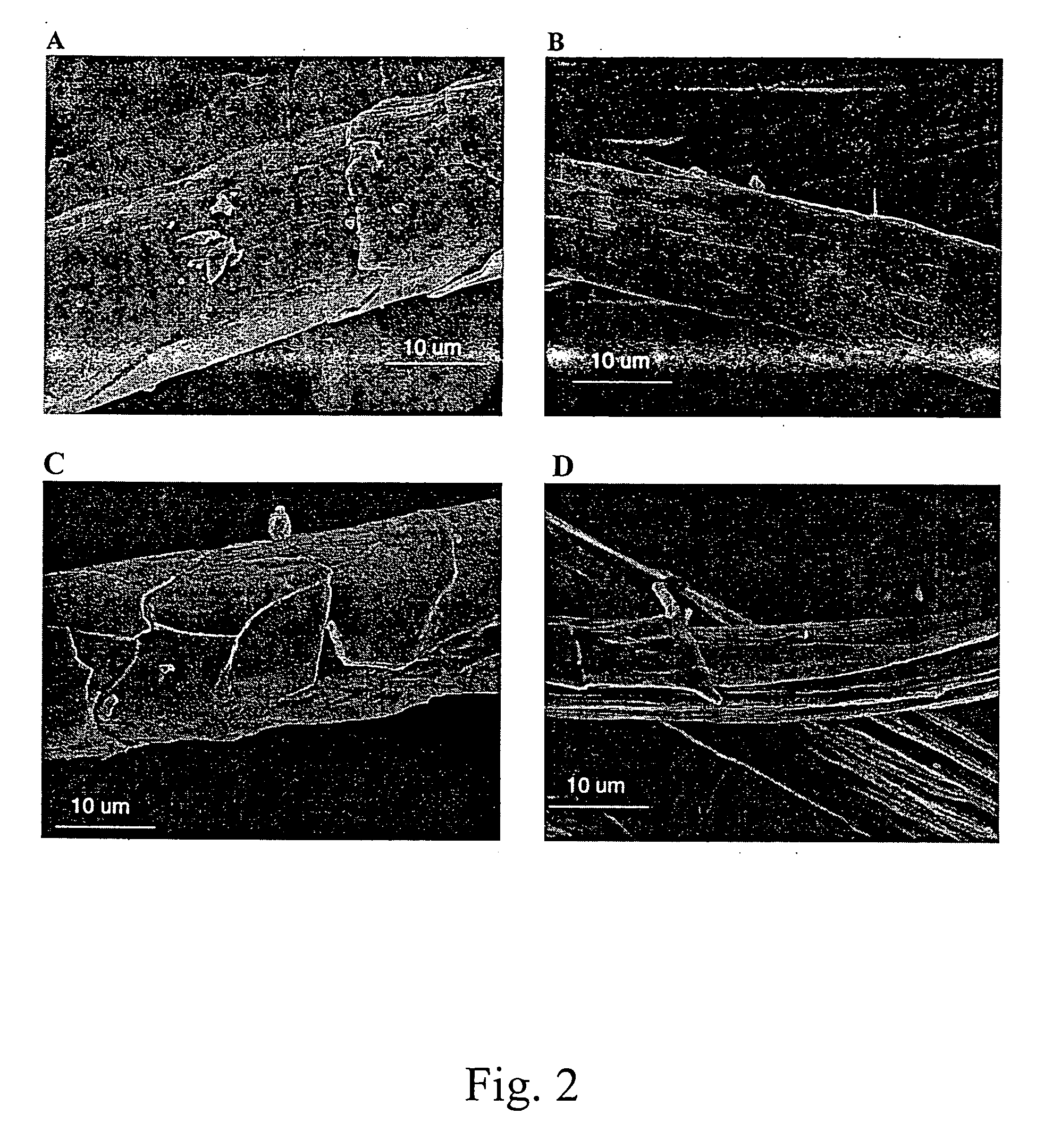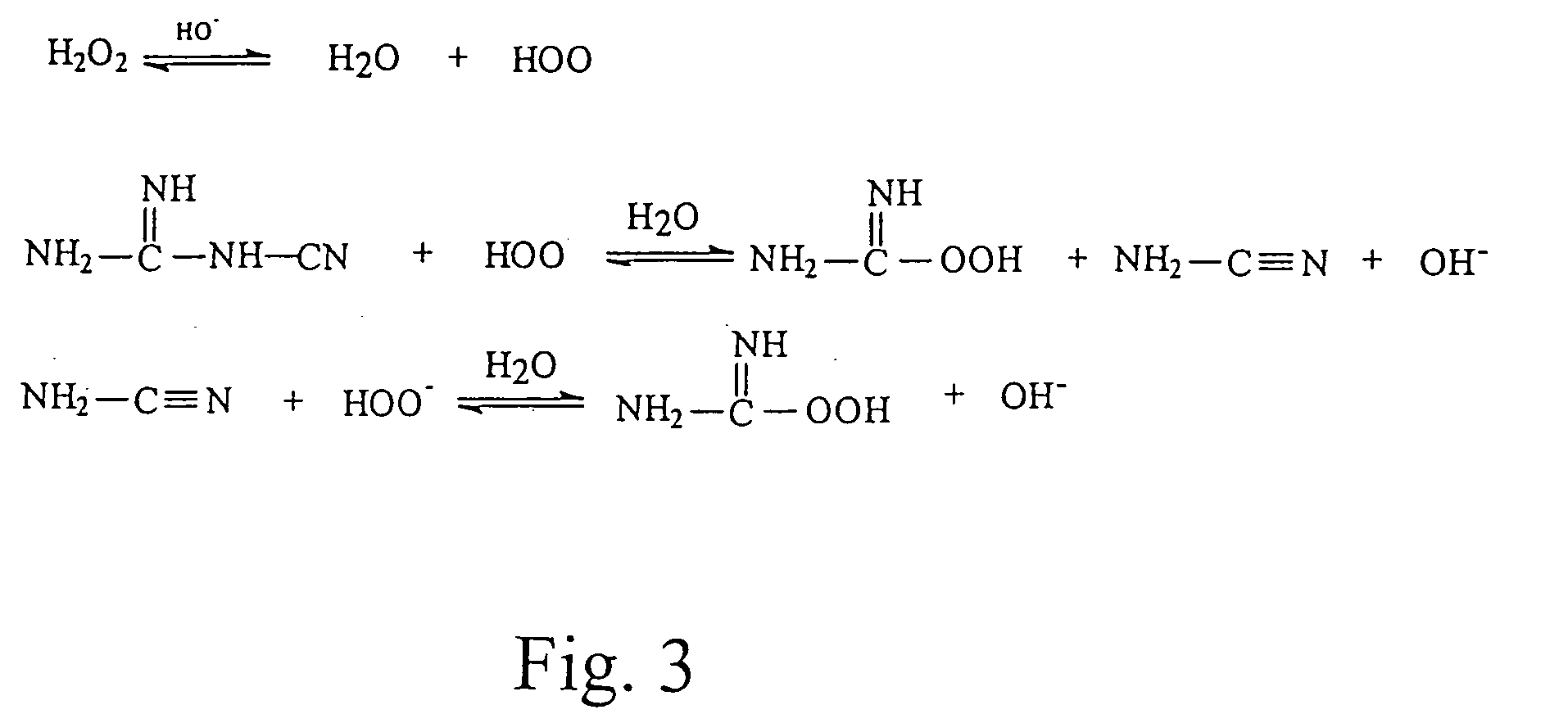Methods of improving shrink-resistance of natural fibers, synthetic fibers, or mixtures thereof, or fabric or yarn composed of natural fibers, synthetic fibers, or mixtures thereof
a technology of natural fibers and shrink-resistance, applied in the direction of detergent compositions, dyeing processes, detergent compounds, etc., can solve the problems of not using dichloroisocyanuric acid, chloroamines, peroxymonosulfuric acid, peroxymonosulfuric acid, etc., and achieve the effect of improving the shrink-resistance of natural fibers
- Summary
- Abstract
- Description
- Claims
- Application Information
AI Technical Summary
Benefits of technology
Problems solved by technology
Method used
Image
Examples
first example
Materials And Methods:
[0044]Worsted wool fabrics (Testfabrics Inc.), #523 worsted flannel, as received, were cut to 10 gram sample weights.
[0045]D-Gluconic acid, CAS Reg. No. [526–95-4] was supplied by Sigma (St. Louis, Mo.) as the potassium salt of (2,3,4,5,6-pentahydroxycapric acid, 99%). Two nonionic surfactants, having different cloud points (the temperature at which the surfactant drops out of solution, causing the solution to become cloudy) described as alkylaryl polyether alcohols, Triton X-100 (9 to 10 ethylene oxide units per molecule in the ether side chain, 1% solution cloud point, 65° C.) and Triton X-114 (7 to 8 ethylene oxide units, 1% solution cloud point, 22° C.) were supplied by Sigma (St. Louis, Mo.). Under our reaction conditions (30° C. and 40° C.) the solution containing Triton X-100 was clear and the solution containing Triton X-114 was cloudy. Boric acid, dicyandiamide (DD) and hydrogen peroxide (H2O2), 30%, were obtained from Aldrich (Milwauke, Wis.). Sodium ...
second example
Materials And Methods:
[0096]Worsted wool fabrics, D-Gluconic acid, Triton X-114, Esperase®, dicyandiamide and hydrogen peroxide were the same as described above. Triethanolamine (Aldrich Chemical Company, WI) was used as buffer for enzyme treatment. Sodium hydroxide (NaOH) was obtained from Mallinckrodt Baker, Inc. (Paris, Ky.) in a lab grade.
[0097]Experimental Design: Wool fabrics, four at a time, were pretreated and treated in individual baths with liquor ratio 25:1. Pretreatment baths contained 3 g / L NaOH, 3 g / L DD, H2O2 (30%): 20 ml / L, 1 g / L potassium salt of GA and 2 g / L Triton X-114. All samples were pretreated at 30° C. for 30 minutes in an Atlas LP2 Launder-Ometer and Lab Dyeing System. After pretreatment the fabrics were rinsed in cold water and squeezed of excess water before placing them in the enzyme treatment baths. Enzyme baths, run at 45° C., were prepared according to Table IX, where the concentrations of Esperase 8.0L and sodium sulfite were based on the weight of s...
third example
[0113]Enzymes other than alkaline protease (e.g., Esperase® which is a serine protease) may be utilized in the present invention. For example, the cystine protease papain may be utilized. A Rotatable Central Composite statistical design consisting of 31 experiments was utilized to investigate the importance of various concentrations of papain and other treatment bath constituents for achieving shrinkage control, smooth handle and whiteness.
[0114]Treatments were carried out using woven wool fabrics (TF523). Pretreatment was similar to that used in the H2O2 / Esperase® systems where 1L pretreatment bath contained the formulation as follows: 3 g / l NaOH, dicyandiamide, 1 g / l gluconic acid, 1 g / l triethanolamine, 20 ml / l H2O2 (30%), 2 g / l Triton X-114, LR: 25:1. Pretreatment and papain treatments were carried out in LP2. Pretreatment was applied for 40 minutes at 30° C. after which the samples were rinsed in cold water. The pretreated samples were squeezed to remove excess water and sequen...
PUM
| Property | Measurement | Unit |
|---|---|---|
| Temperature | aaaaa | aaaaa |
| Temperature | aaaaa | aaaaa |
| Temperature | aaaaa | aaaaa |
Abstract
Description
Claims
Application Information
 Login to View More
Login to View More - R&D
- Intellectual Property
- Life Sciences
- Materials
- Tech Scout
- Unparalleled Data Quality
- Higher Quality Content
- 60% Fewer Hallucinations
Browse by: Latest US Patents, China's latest patents, Technical Efficacy Thesaurus, Application Domain, Technology Topic, Popular Technical Reports.
© 2025 PatSnap. All rights reserved.Legal|Privacy policy|Modern Slavery Act Transparency Statement|Sitemap|About US| Contact US: help@patsnap.com



